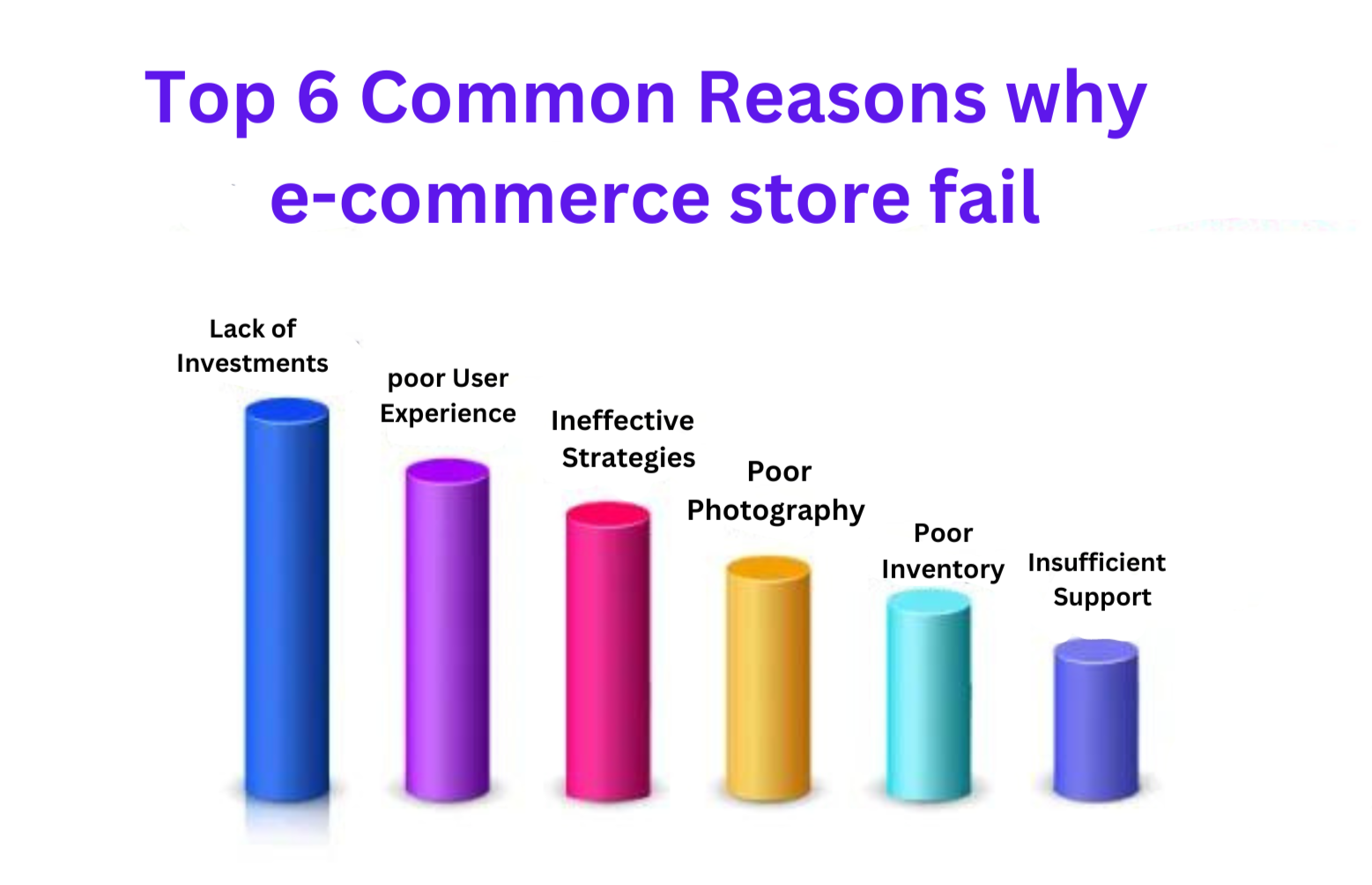
Why do ecommerce business fail?

3 October 2023
Launching an online business is exciting, but there are challenges. In this blog, we explore why some e-commerce businesses fail and share insights into common mistakes. Understanding these pitfalls helps entrepreneurs navigate the digital marketplace better for a higher chance of success.

1.Lack of Strategic Investments in E-commerce Startups:
Many e-commerce startups face challenges because they don't invest wisely. Some neglect important aspects like a strong website, good marketing, and reliable customer service. These oversights can result in a bad experience for customers and impact the overall success of the startup.
Solution:
To do well in online business, new startups should spend money wisely. Focus on making a website that's easy for users, use good marketing strategies, and provide reliable customer service. Investing smartly in these areas sets a strong base for a good customer experience and overall success in the business.
2.Poor Website Design and User Experience:
Even with a great business plan, a bad website can be a deal-breaker. A poorly designed site with a confusing layout and slow loading times can drive away potential customers. For a successful e-commerce site, it needs to be secure, work well on mobile, and load fast. Anything less is not acceptable.
solution:
Ensure your website has a user-friendly design, smooth navigation, and mobile responsiveness to enhance the overall customer experience.
3.Ineffective Marketing Strategies:
Depending only on old-fashioned marketing methods or poorly planned digital strategies can limit your business's ability to connect with customers. If your approaches are outdated or digital campaigns aren't well-executed, your products or services might not get noticed by the people you want to reach, leading to low visibility.
Solution:
Put your money into a complete and focused marketing plan. Use things like SEO, social media, content marketing, and paid advertising all together for a well-rounded approach.
4. Poor Product Photography:
E-commerce businesses might struggle if the product photos aren't good because customers need clear and attractive visuals when shopping online. If the pictures are not high-quality and well-lit, people might not be interested, and it can affect their trust in the online shopping experience.
Solution:
To avoid poor product photography, consider investing in professional photography services or acquiring basic photography skills. Ensure your product images are well-lit, clear, and visually appealing to provide customers with a detailed and positive online shopping experience.
5.Poor Inventory Management:
Poor inventory management is a common reason for e-commerce businesses to fail. This happens when they run out of products or have too much, leading to increased costs and cash flow issues. Inaccurate predictions of what customers want, problems in the supply chain, and difficulty adapting to market changes also make customers unhappy. All of this affects the overall success and reputation of the business.
Solution:
To improve online store inventory, use efficient tracking and automation. Predict customer preferences with data, streamline product delivery, and adjust inventory based on popularity. Implement just-in-time inventory, leverage technology, and foster collaboration. Regularly check inventory, sell in various places, and listen to customer feedback for effective management.
6.Insufficient Customer Support:
Helping customers is essential for online businesses. If you don't give quick and good help, customers might have bad experiences and not buy things. It's good to have different ways for customers to get help, like chatting live, emailing, or calling. Also, having clear rules for returns and refunds can make customers trust the business more and make sure they're happy with what they buy.
Solution:
To solve this, businesses must invest in strong customer support, providing quick and helpful assistance for a positive experience. Offering options like live chat, email, and phone support is crucial. Clear and fair return policies build trust, ensuring customer satisfaction.
